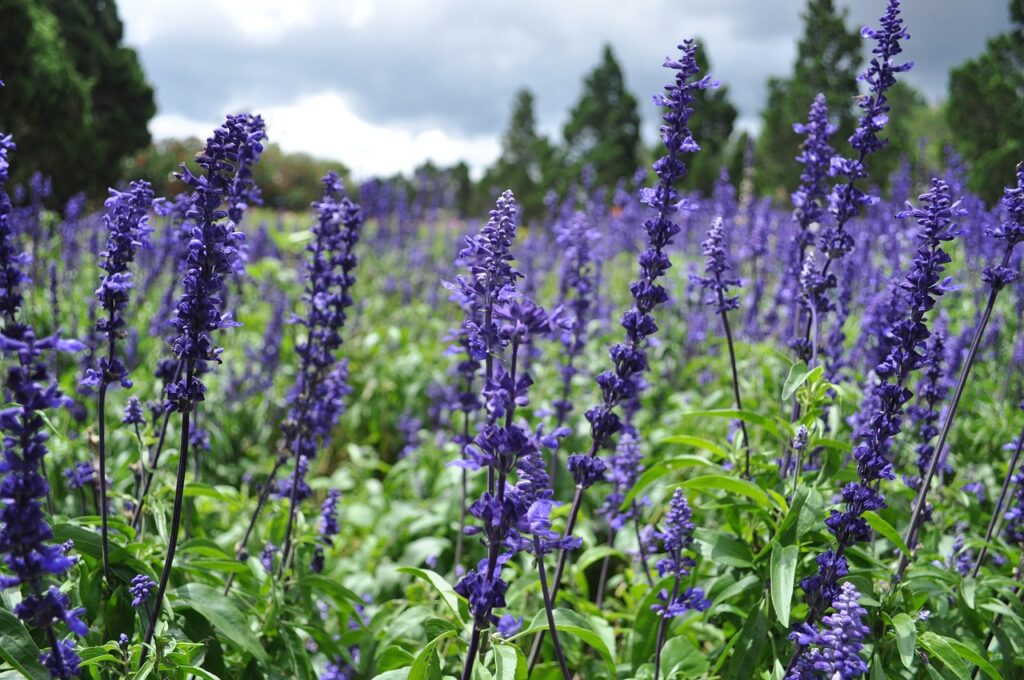Spikenard Essential Oil: What You Need to Know
Flowers are some of the most beautiful gifts in creation, and many of them offer incredible benefits beyond their appearance. Spikenard is one of those plants. Its essential oil has a rich, earthy aroma and a long history of traditional use.
- Spikenard Studies and Ongoing Research
- How Spikenard and Other Essential Oils Should Be Used Responsibly
- 7 Real Uses of Spikenard Essential Oil:
- Final Thoughts
- Spikenard Essential Oil FAQs
- What does spikenard essential oil smell like?
- What essential oils blend well with spikenard?
- What are some ways to use spikenard aromatically?
- How can you incorporate spikenard into skincare?
- What are some fun, creative applications for this earthy oil?
- What household uses work well for spikenard?
- How does spikenard promote relaxation?
- Can you use spikenard on your hair?
- Is spikenard safe for pets?
Spikenard, also known as nard or jatamansi, comes from the rhizomes of the plant. A rhizome is simply the underground stem that stores nutrients and produces new growth. If you’re familiar with orchids, ginger, or turmeric, you’ve seen rhizomes before. Spikenard’s rhizomes are carefully processed to extract a deeply aromatic, amber-colored essential oil that is notably strong and concentrated.
This plant belongs to the valerian family and grows best at high elevations. Most spikenard is sourced from the Himalayan regions of Nepal, India, and China, where the plant naturally thrives in cool, mountainous climates. Throughout history, spikenard has been valued for its soothing properties, ceremonial use, and distinctive fragrance. It appears in many ancient texts and cultural traditions, which speaks to its long-standing significance across generations.
The perfumery uses of this oil are well documented in history as well. This beautifully scented oil was used by the Romans as well as the ancient Egyptians for just that purpose. Furthermore, there are very notable mentions of spikenard in Biblical documents, including both the Old and New Testaments. (Source).
When it comes to present-day medicinal uses, the truth is that research is still in very early stages. As we examine some of the available research and potential uses, remember that, as with many essential oils, their uses aren’t quite as black and white as some distributors and marketers would have us think.
That’s why we always try to link to relevant studies for each essential oil we write about so that you can read them yourself.

I only mention this because it seems like almost every essential oil is perceived as a kind of “Holy Grail” that cures all diseases. Or, at least, that’s what you’d think if you did a quick Google search of any of them online.
Whether you read our essential oil information here at Enticingly Simple or elsewhere, remain critical, read the studies, and draw your own conclusions. That’s a post for another day; moving on.
Spikenard Studies and Ongoing Research
I briefly mentioned a bit ago that Spikenard has been studied to some degree. That being said, research is still accumulating. So, while all the findings related to studies aren’t comprehensive for spikenard just yet, let’s consider some of the research that has been performed.
- Sedative Activity: Spikenard has been traditionally used as a sedative and anti-stress agent. Animal trials show that the compounds contained in the oil increased calming neurotransmitter substances in mice. Other studies further show that those mice that were given nard (short for spikenard) had decreased movement and increased rest time as well. (Source)
- Hair Growth: One study published in 2011 was the first to separate specific compounds found in spikenard for the purpose of testing their efficacy in relation to hair growth. Compound 1 was nardal colorless oil, compound 2 was Jatamansic acid colorless crystals, and compound 3 was nardin colorless crystals. Each of these substances had varying qualities and were examined for their effectiveness. The results of the study showed that the individual compounds did promote hair growth. That being said, the crude extract (not fractionated) was most effective for hair growth (reduced hair regrowth time by 30%). Therefore, spikenard essential oil is beneficial for hair growth. (Source)
- Antifungal Activity: Spikenard essential oil shows promising results against varying kinds of fungi. (Source)
- Anti-Inflammatory Activity: N. Jatamansi oil has demonstrated anti-inflammatory effects in mice when they were given oral doses of the water extracted from its root. (Source)
- Bactericidal Activity: In a study of 96 various essential oils, spikenard was shown to be one of the most active oils against C. jejuni, a bacterium commonly found in animal feces. (Source)
- Miscellaneous/Developing Research: Further research suggests many other potential benefits from Spikenard. To list a few: liver protective properties, pancreas treatment, protective cardiovascular effects, neuroprotection, and more. The plant substances also do not demonstrate toxicity. (Source)
Now, the list above is just a taste of the research conducted with Spikenard. So, there’s definitely a wealth of evidence showing the benefits of spikenard in general.
For those of you who are more analytical, you may find many of the above sources a very interesting read. Some of us actually do enjoy reading scientific studies and other publications, even if it may take us longer to understand them!
In any case, developing research shows that spikenard and its underlying compounds are indeed effective in animal trials for potentially treating a wide range of conditions. Research related to spikenard does look promising.
How Spikenard and Other Essential Oils Should Be Used Responsibly
In the last section, we looked at some of the research surrounding spikenard. Now it’s important to pause and set realistic expectations. Essential oils are often surrounded by hype, especially online, and that can lead to confusion or unsafe use.
Just because early research on a plant compound looks promising does not mean we should try to replicate those results at home with essential oils. If a plant-based extract is used in medical settings, that does not automatically make the essential oil version safe for self-treatment, internally or externally.
Essential oils may be natural, but they are still extremely concentrated substances. Used incorrectly, they can cause harm. Skin irritation, allergic reactions, respiratory problems, and even severe complications can occur when oils are taken internally or applied undiluted.
So what does this mean for you?
The research we share is meant to educate and inspire curiosity about the natural world. It’s interesting to learn how certain plants are being studied and what potential benefits may exist, especially when it comes to natural wellness and beauty. But information should never be confused with medical instruction.
Here’s the bottom line:
- Spikenard essential oil will not cure heart disease.
- It will not treat cancer or diabetes.
- It will not eradicate every bacteria in your home.
- It is not a miracle remedy for major medical conditions.
You’ll find bold claims like these all over the internet, and many of them are exaggerated or misleading. Please be cautious. Your health and safety matter far more than any trending wellness claim.
Use essential oils thoughtfully, respectfully, and always within safe guidelines. The goal is to enjoy them—not to rely on them for outcomes they were never meant to deliver.
7 Real Uses of Spikenard Essential Oil:
- Skin Balm. Due to the gentle nature of this oil, it can be used to add an excellent fragrance to homemade skin balms and lotions. When blended with a carrier oil, it mixes well with other spicy or warm-scented essential oils. It also works well with citrus essential oils.
- Relaxation and Massage. For ultimate relaxation, include spikenard in your next homemade massage blend. The earthy scent is sure to relieve tension and stress. To use this, add about 15 drops of the essential oil to one ounce of any carrier oil of your choice.
- Deodorizer. As with many essential oils, you can give your personal homemade deodorant the unique scent of spikenard.
- Home Cleaner and Refresher. In a spray bottle, mix vinegar, 10-15 drops of spikenard essential oil, and 5 drops of any citrus essential oil of your choice. Use to naturally clean and deodorize hard surfaces.
- Bath Soak. Add spikenard to your bath water for a rejuvenating and relaxing experience. Add 5-10 drops to your next bath.
- Homemade Soap Scent: If you aren’t sure how to make homemade bar soap, it’s really not difficult. Add spikenard to the recipe for your next batch of earthy-blend scented soap bars.
- Vaporization. This should be done using a quality essential oil diffuser.
Final Thoughts
It’s is no doubt that spikenard essential oil, like many essential oils, could easily be considered a multi-purpose essential oil. Actually, I would consider any oil that’s known to be safe and pleasantly scented to be a multi-purpose oil. Of course, certain oils do perform better for some applications than others.
Isn’t it exciting that we can experience one of the same scents that cultures have used for thousands of years? That’s one of the reasons why I love essential oils and natural living in general. There is so much to be experienced in this world that other families, cultures, and people groups have already benefited from.
Unplug yourself from the world for a bit and breathe in a scent that countless individuals like yourself have experienced for thousands of years. Go take a relaxing bath or read a good book next to your diffuser. Whatever you do to find relaxation, introduce the calming scent of spikenard if you haven’t done so before.
Spikenard Essential Oil FAQs
Using Spikenard Essential Oil
What does spikenard essential oil smell like?
Spikenard has an earthy, woody aroma that many describe as warm, mossy, or slightly musty. It is strong and distinctive, making it a unique addition to essential oil blends, homemade soaps, or DIY beauty products.
What essential oils blend well with spikenard?
Spikenard pairs well with several families of oils, including:
- Floral oils such as lavender, geranium, or clary sage
- Citrus oils like bergamot or sweet orange
- Woodsy oils such as cedarwood or sandalwood
These combinations help soften its deep, earthy scent.
What are some ways to use spikenard aromatically?
You can enjoy spikenard’s grounding aroma by:
- Adding a few drops to an essential oil diffuser
- Mixing it into bath salts or DIY bath bombs
- Scenting sachets or natural potpourri
- Adding it to a warm bath with Epsom salts
Its aroma is especially nice in evening routines or wind-down rituals.
How can you incorporate spikenard into skincare?
Dilute spikenard in a carrier oil or blend it into an unscented lotion before applying it to your skin. It works well in:
- Homemade body oils
- Natural creams
- DIY salves or balms
- Massage blends
Always test a small area first to ensure your skin tolerates the oil well.
What are some fun, creative applications for this earthy oil?
Spikenard is a great scent for slow, cozy projects. Consider adding it to:
- Homemade candles
- Cold-process or melt-and-pour soaps
- Natural perfumes
- Incense cones or sticks
Its grounding aroma pairs nicely with fall or winter creations.
What household uses work well for spikenard?
Try adding a few drops to:
- Freshen potpourri
- Homemade laundry detergent
- Dryer balls
- Cotton pads tucked into closets or drawers
Avoid placing essential oils directly on lightbulbs because modern bulbs can overheat or be damaged by oils.
How does spikenard promote relaxation?
In aromatherapy, spikenard is known for its calming, grounding qualities. Its deep, earthy scent can help settle the mind and support a more relaxed atmosphere, useful during nighttime routines, prayer time, or moments of quiet.
Can you use spikenard on your hair?
Yes. Add 2–3 drops to your shampoo or conditioner to help soothe a dry or irritated scalp. You can also dilute it in a carrier oil for a simple scalp massage.
Is spikenard safe for pets?
No. Spikenard should be kept away from cats and dogs. Like many essential oils, it can be harmful or toxic if ingested or absorbed through their skin. Keep all oils out of reach and avoid diffusing them around pets unless you’ve consulted a veterinarian familiar with essential-oil safety.


